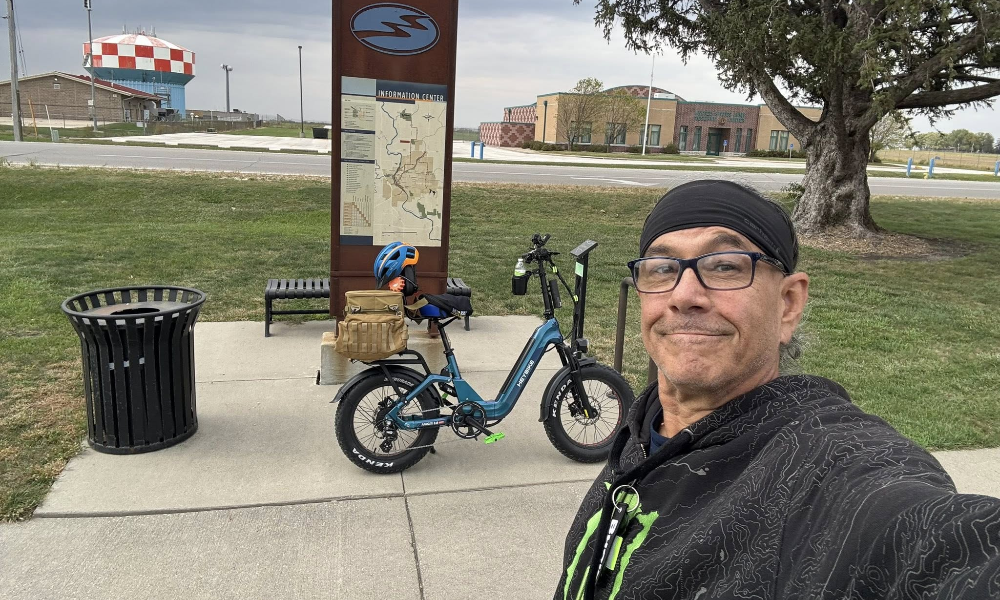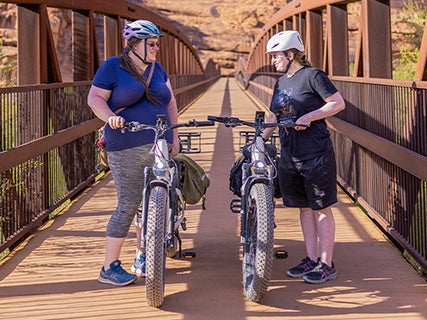How Does Electric Bikes Define in Utah?
The state of Utah defines electric bikes as bikes having a motor and fully functional pedals. You should not be able to remove the pedals. According to Utah law, an e-bike is a conventional pedal bike with an assistance motor and is powered by human power. There are three categories of e-bikes in Utah. The maximum assisted speed for each class is between 20 and 28 mph, and the highest motor power is 750W. Every mention of E-bikes that follows is based on this definition.
The rules governing e-bikes vary from state to state. The three-class system has been implemented by several states, although not all of them. Counties frequently have their area-specific E-bike regulations. The regulations governing the usage of electric bikes in Utah are listed here. Make sure that each county may have minor differences in local pathways and trails.

Three categories of electric bikes exist:
- Class 1 electric-assist bikes are electric bikes that have a pedal-assist-only motor that shuts off when the e-bike reaches 20 mph.
- Bikes classified as Class 2 with electric assistance are fitted with motors that can move the bike and shut it off when it reaches a speed of 20 mph.
- In Utah, Class 3 e-bikes, in the industry, are described as bikes with a motor. The engine assists you while you ride, making it effortless. But as the speed reaches 28 mph, the assistance is cut off and is not recognized or allowed to be used. In Utah, the maximum speed limit is 25 MPH.
Utah's E-bike Laws for Trail?
However, there is a lot of legal ambiguity around E-bikes on mountain paths. It is due to the lack of clear regulations governing E-bikes from local, state, and federal land agencies.
- LOCAL: Speak with the local land management organization.
- STATE: The state has had no e-bike (eMTB) policy in place for Utah State Parks recently.
- FEDERAL: Because eMTBs are considered motorized vehicles on federal properties, they are allowed on motorized trails.
Motorized trails
You can ride E-bikes on any trail or in any region that recently permits OHVs.
Non-motorized trails
Only if a BLM Manager issues a written decision approving E-bike use in compliance with applicable rules and regulations are e-bikes permitted on paths only open to bikes and non-motorized travel. E-bikes, like conventional bikes, are not permitted in designated wilderness areas and might not be suitable for off-road paths.
Ride your eMTB only in regions where it is evident what the local laws are. Ride only on trails that have been given permission. When in doubt, ask the Local Land Manager how to access particular routes. Local land laws frequently alter. Always exercise caution when using trails. Be considerate, and stop and greet people.
A person may ride an electric-assist bike on a path or trail authorized for bike usage. An ordinance or law may be adopted by a municipal authority or state agency to control or limit the use of an electric assisted bike, or a particular kind of electric assisted bike, on a sidewalk, route, or trail that is under their purview.
Frequently Asked Questions About Riding E-bikes in Utah
Do you need a license to ride bikes in Utah?
No. Any rider does not require any insurance, registration, or licensing requirements for electric bikes by current Utah e-bike laws. Although, you can get insurance on your electric bikes without law requirements.
Are there any age restrictions for riding bikes in Utah?
You cannot ride Class 3 bikes if you are anyone under 16, and all-electric bikes cannot be operated on public property by anyone under 14 unless a guardian is present. Highways, footpaths, and sidewalks are examples of public property.
Should I wear a helmet to ride bikes in Utah?
All working riders in Utah must wear helmets when using Class 1 or 2 e-bikes. All Class 3 e-bike riders must wear helmets. The only age group required to wear a helmet is under 18. Regardless of age, only those riding class III e-bikes are required to use a helmet while doing so. If evidence is presented showing that a helmet was bought or rented between the date of the infraction and the court appearance, a fine for class 3 helmet violations will be waived.
Conclusion
A unique interest and a fantastic method to keep in shape are both provided by electric bikes. You should be aware that your choice of riding site may be affected by the class of e-bike you ride now that e-bike owners have clarification on electric bike laws in Utah. Your preferred bike route might be prohibited.
But, if you break the rules, this pastime becomes problematic; fines are not the ideal way to start the week. Contact the local authorities to ensure that all of your information is current.



Share:
Can Ebikes Provide A Good Workout?
How to Avoid Wrist Pain?